
How to Use OpAmp op07c: Examples, Pinouts, and Specs
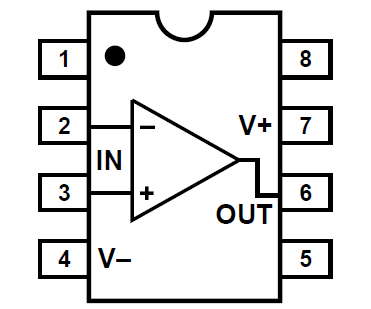
 Design with OpAmp op07c in Cirkit Designer
Design with OpAmp op07c in Cirkit DesignerIntroduction
The OP07C is a precision operational amplifier (op-amp) manufactured by Texas Instruments. It is renowned for its ultra-low offset voltage, low noise, and high stability, making it ideal for high-accuracy applications. The OP07C is widely used in signal processing, instrumentation, and control systems where precision is critical.
Explore Projects Built with OpAmp op07c
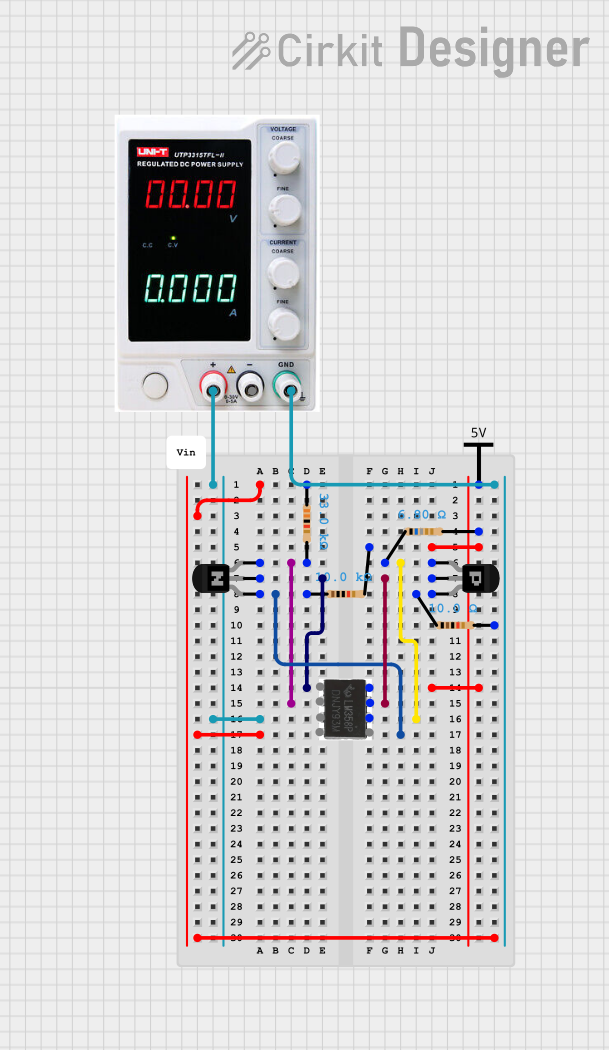
 Open Project in Cirkit Designer
Open Project in Cirkit Designer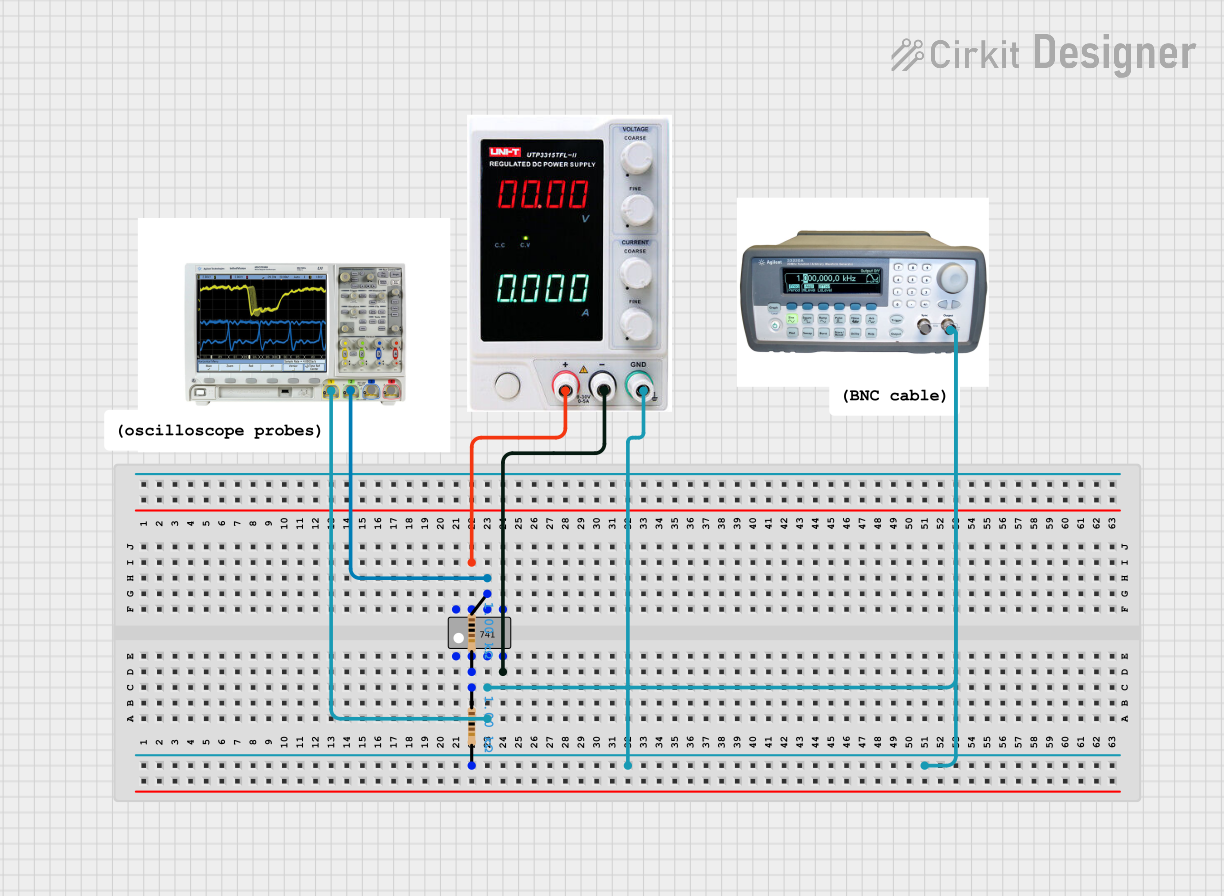
 Open Project in Cirkit Designer
Open Project in Cirkit Designer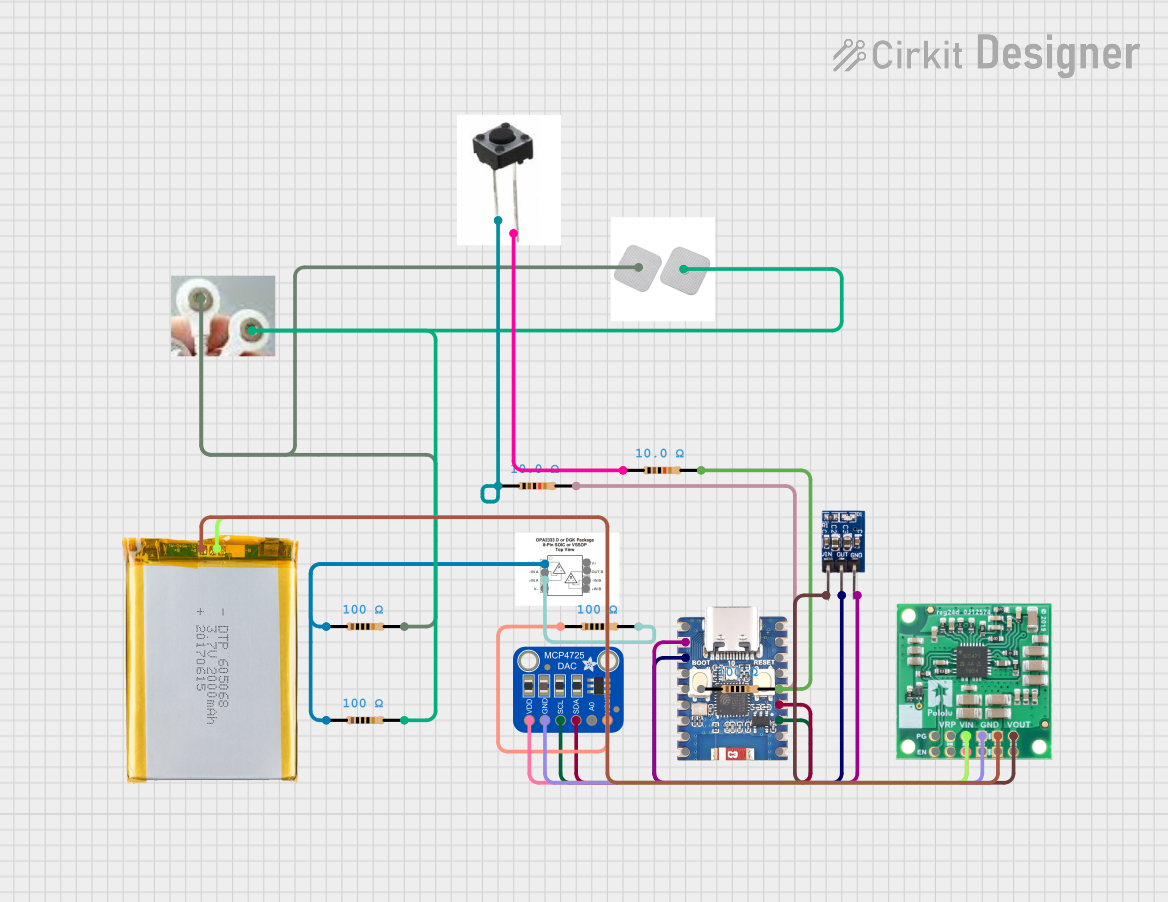
 Open Project in Cirkit Designer
Open Project in Cirkit Designer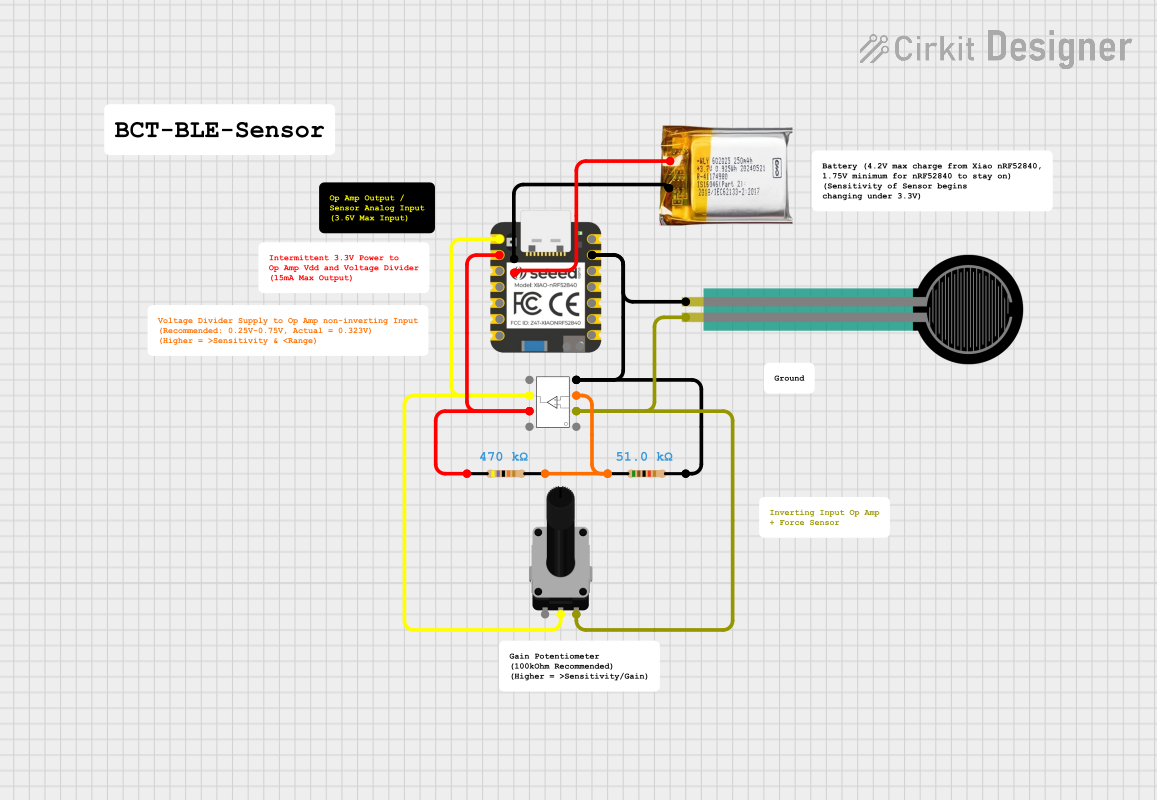
 Open Project in Cirkit Designer
Open Project in Cirkit DesignerExplore Projects Built with OpAmp op07c

 Open Project in Cirkit Designer
Open Project in Cirkit Designer
 Open Project in Cirkit Designer
Open Project in Cirkit Designer
 Open Project in Cirkit Designer
Open Project in Cirkit Designer
 Open Project in Cirkit Designer
Open Project in Cirkit DesignerCommon Applications and Use Cases
- Signal conditioning and amplification
- Data acquisition systems
- Medical instrumentation
- Precision voltage reference circuits
- Analog computation and control systems
- Low-noise audio preamplifiers
Technical Specifications
The OP07C is designed to deliver exceptional performance in demanding applications. Below are its key technical specifications:
Key Parameters
| Parameter | Value |
|---|---|
| Supply Voltage Range | ±3 V to ±18 V |
| Input Offset Voltage | 75 µV (max) |
| Input Bias Current | 1.8 nA (typical) |
| Input Offset Current | 0.2 nA (typical) |
| Gain Bandwidth Product | 0.6 MHz |
| Slew Rate | 0.3 V/µs |
| Output Voltage Swing | ±13.5 V (with ±15 V supply) |
| Operating Temperature Range | -40°C to +85°C |
| Package Options | SOIC-8, PDIP-8, TSSOP-8 |
Pin Configuration and Descriptions
The OP07C is available in an 8-pin package. Below is the pinout and description:
| Pin Number | Pin Name | Description |
|---|---|---|
| 1 | Offset Null 1 | Used for offset voltage adjustment (with Pin 5) |
| 2 | Inverting Input | Inverting input terminal of the op-amp |
| 3 | Non-Inverting Input | Non-inverting input terminal of the op-amp |
| 4 | V- (Negative Supply) | Negative power supply terminal |
| 5 | Offset Null 2 | Used for offset voltage adjustment (with Pin 1) |
| 6 | Output | Output terminal of the op-amp |
| 7 | V+ (Positive Supply) | Positive power supply terminal |
| 8 | NC (No Connect) | Not connected internally |
Usage Instructions
The OP07C is straightforward to use in a variety of circuit configurations. Below are guidelines for integrating it into your design:
Basic Circuit Configuration
- Power Supply: Connect the V+ and V- pins to the positive and negative supply voltages, respectively. Ensure the supply voltage is within the specified range (±3 V to ±18 V).
- Input Connections: Connect the signal source to the inverting (Pin 2) or non-inverting (Pin 3) input, depending on the desired configuration (e.g., inverting or non-inverting amplifier).
- Offset Adjustment: If precise offset voltage adjustment is required, connect a 10 kΩ potentiometer between Offset Null 1 (Pin 1) and Offset Null 2 (Pin 5), with the wiper connected to V+.
- Output Load: Connect the load to the output pin (Pin 6). Ensure the load impedance is high enough to avoid excessive current draw.
Important Considerations
- Bypass Capacitors: Place decoupling capacitors (e.g., 0.1 µF ceramic and 10 µF electrolytic) close to the power supply pins to minimize noise and ensure stable operation.
- Input Protection: Avoid applying voltages beyond the supply rails to the input pins to prevent damage.
- Thermal Management: Ensure the device operates within the specified temperature range (-40°C to +85°C) to maintain performance.
Example: Using OP07C with Arduino UNO
The OP07C can be used to amplify an analog signal for an Arduino UNO. Below is an example of a non-inverting amplifier circuit:
Circuit Description
- Connect the OP07C's non-inverting input (Pin 3) to the signal source.
- Use a resistor divider network to set the gain.
- Connect the output (Pin 6) to an analog input pin on the Arduino UNO.
Arduino Code Example
// Example code to read an amplified signal from OP07C using Arduino UNO
const int analogPin = A0; // Analog pin connected to OP07C output
int sensorValue = 0; // Variable to store the analog reading
void setup() {
Serial.begin(9600); // Initialize serial communication at 9600 baud
}
void loop() {
sensorValue = analogRead(analogPin); // Read the analog value
float voltage = sensorValue * (5.0 / 1023.0); // Convert to voltage
Serial.print("Amplified Voltage: ");
Serial.print(voltage);
Serial.println(" V");
delay(500); // Wait for 500 ms before the next reading
}
Troubleshooting and FAQs
Common Issues and Solutions
No Output Signal:
- Verify the power supply connections (V+ and V-).
- Check the input signal and ensure it is within the op-amp's input range.
- Ensure the load impedance is not too low.
High Offset Voltage:
- Use the offset null pins (Pins 1 and 5) to adjust the offset voltage.
- Verify that the input bias current is not causing a voltage drop across the input resistors.
Unstable Operation:
- Add bypass capacitors close to the power supply pins.
- Check for excessive gain or improper feedback network design.
Overheating:
- Ensure the device is operating within the specified voltage and temperature limits.
- Reduce the load current if necessary.
FAQs
Q1: Can the OP07C be used for single-supply operation?
A1: Yes, the OP07C can operate with a single supply. Connect V- to ground and ensure the input and output signals remain within the op-amp's input and output voltage range.
Q2: What is the maximum gain I can achieve with the OP07C?
A2: The maximum gain depends on the feedback network and the application. However, the op-amp's open-loop gain is typically 200,000 (106 dB).
Q3: How do I minimize noise in my circuit?
A3: Use proper grounding techniques, shield sensitive signal paths, and place decoupling capacitors near the power supply pins.
Q4: Can I use the OP07C for audio applications?
A4: Yes, the OP07C's low noise and high precision make it suitable for low-noise audio preamplifiers and other audio applications.